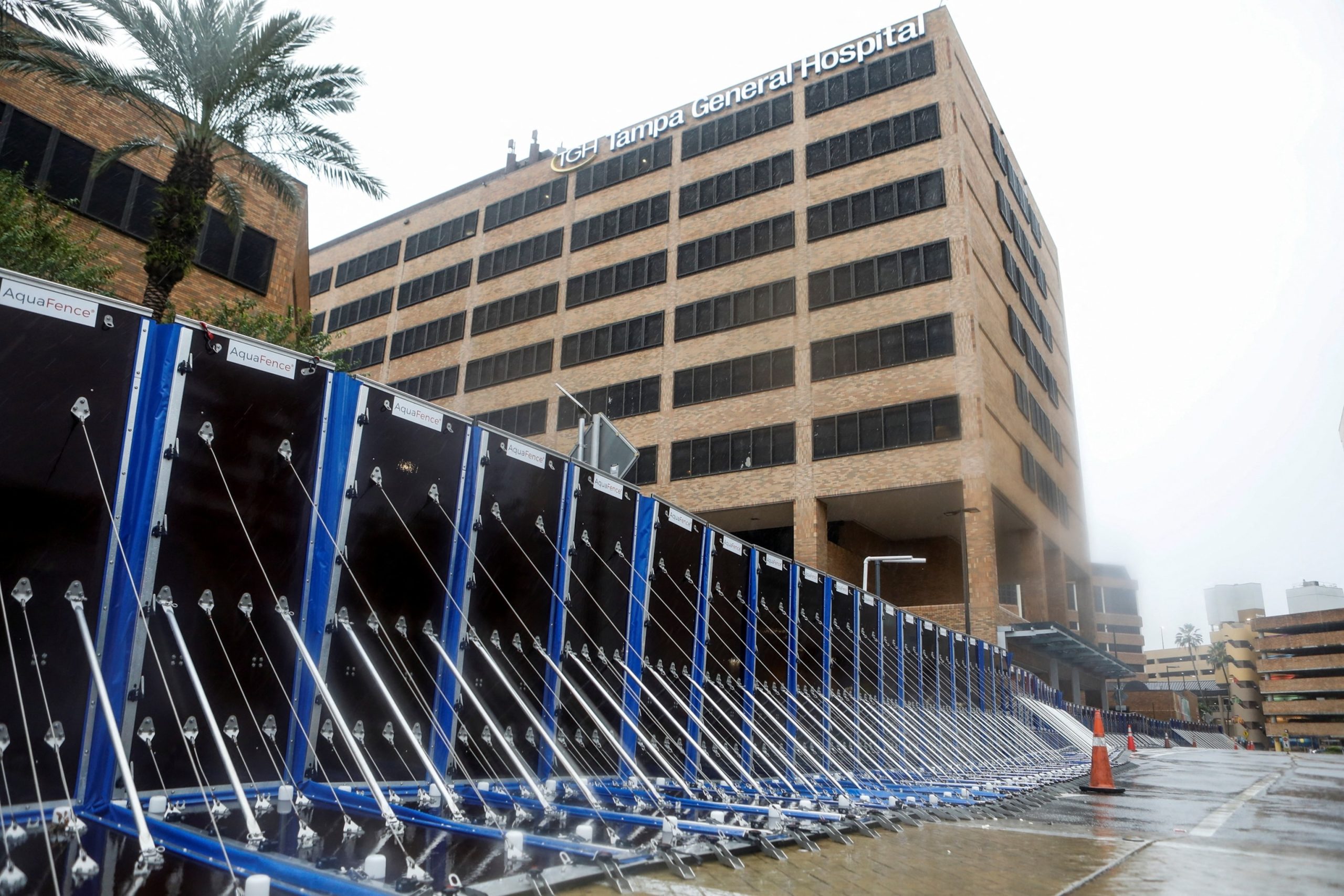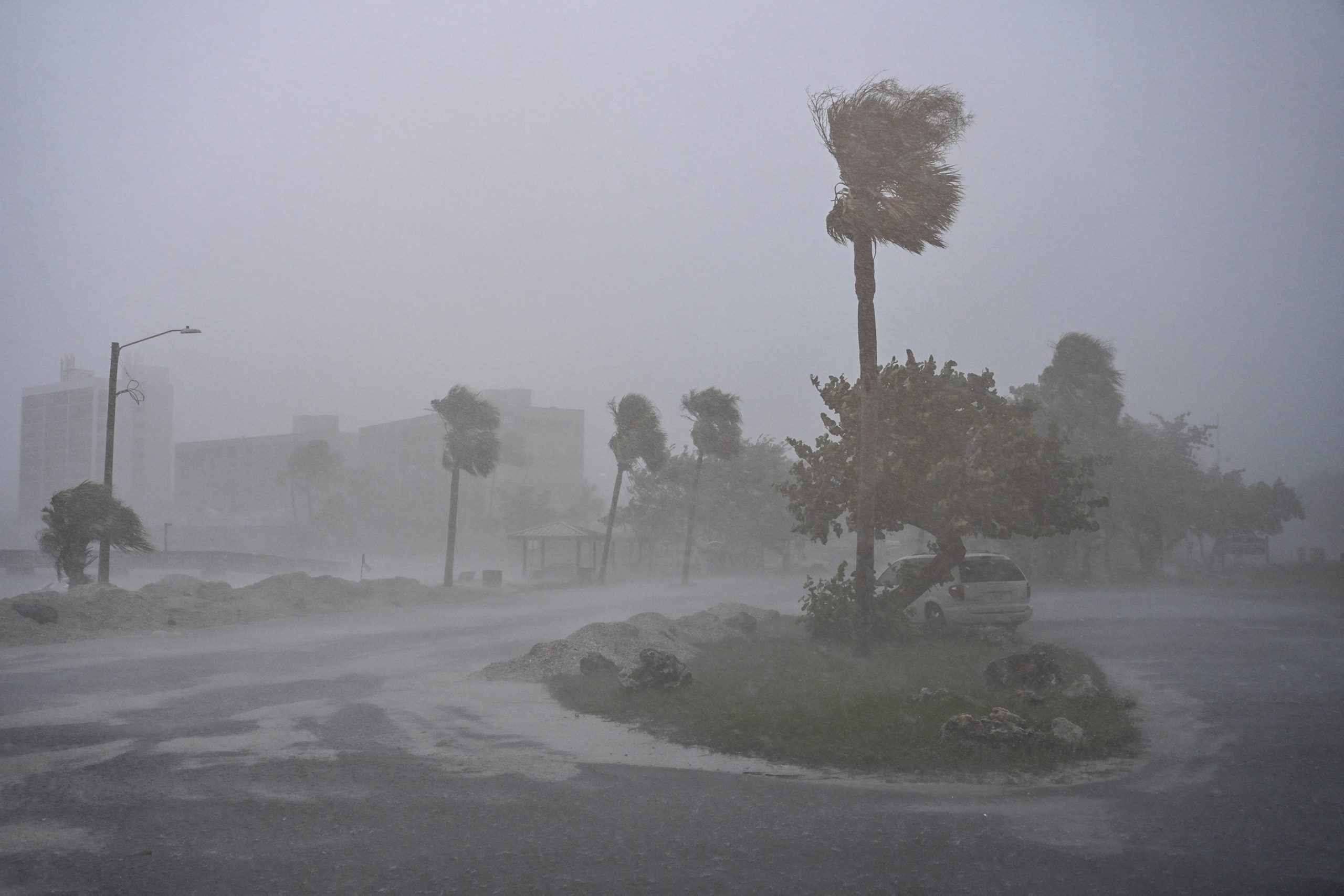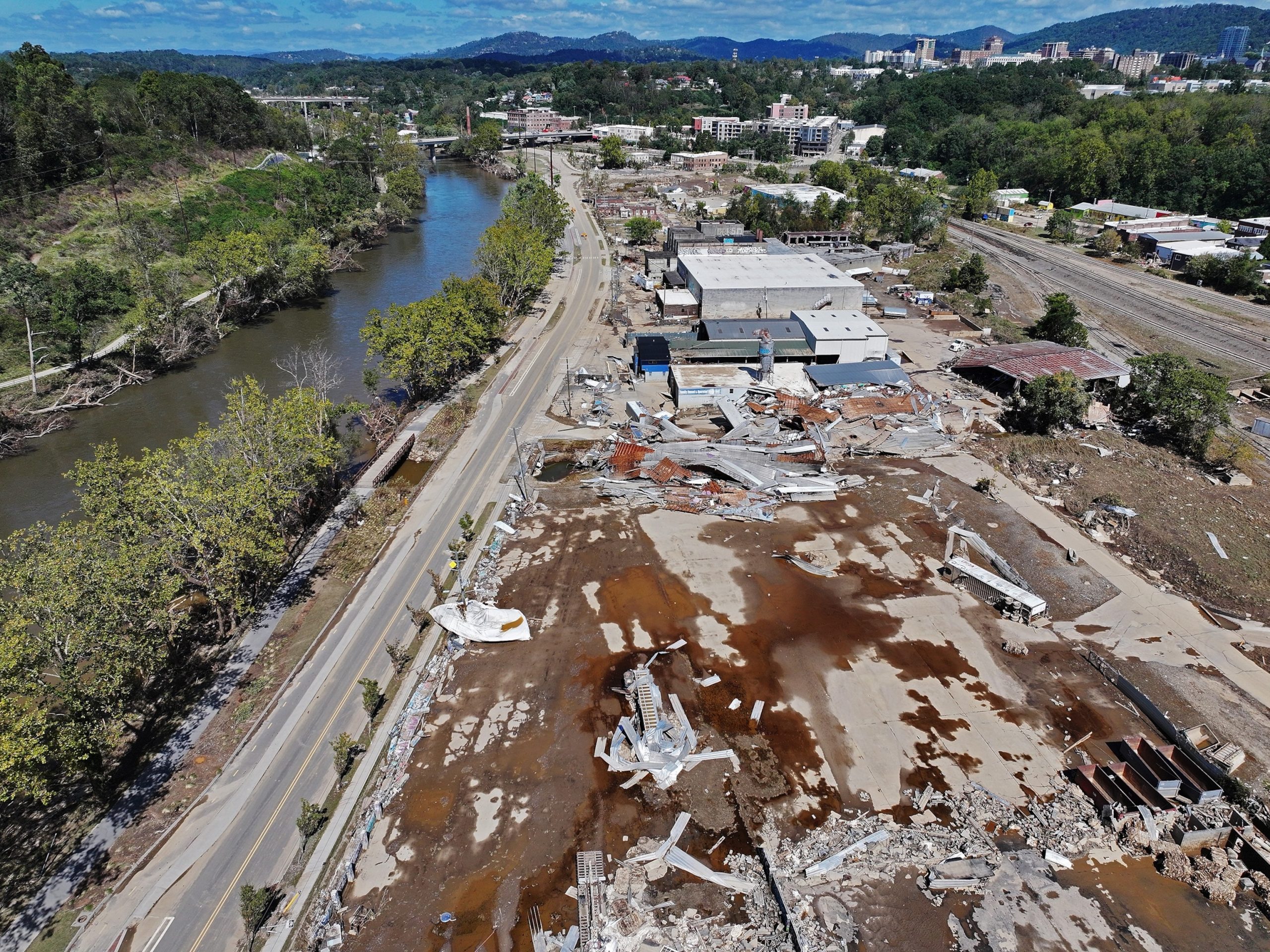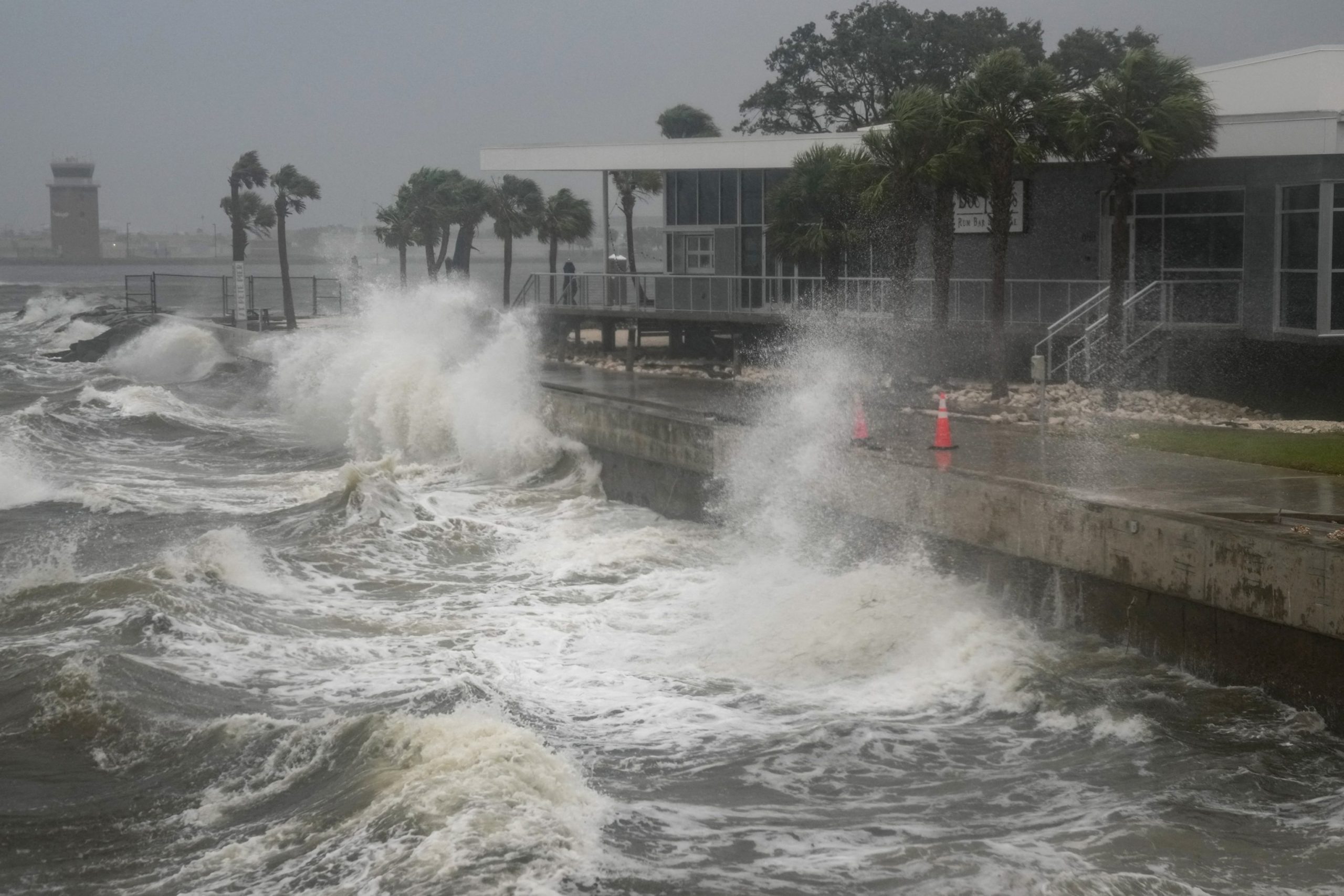Tampa General Hospital put its flood barrier to the test during Hurricane Helene late last month, helping protect the facility from record storm surge.
As Hurricane Milton is expected to bring record-breaking storm surge yet again to the region, the hospital — located on the bay near downtown Tampa — is surrounded by the water-impermeable barrier once more.
Milton is expected to make landfall Wednesday night near Sarasota, south of Tampa, as a Category 3 hurricane. The National Weather Service in Tampa Bay warned on Monday that Milton could be the “worst storm to impact the Tampa area in over 100 years.”
While several health care facilities are suspending service due to Milton, Tampa General Hospital, the region’s only Level I Trauma Center, is preparing to continue normal operations.
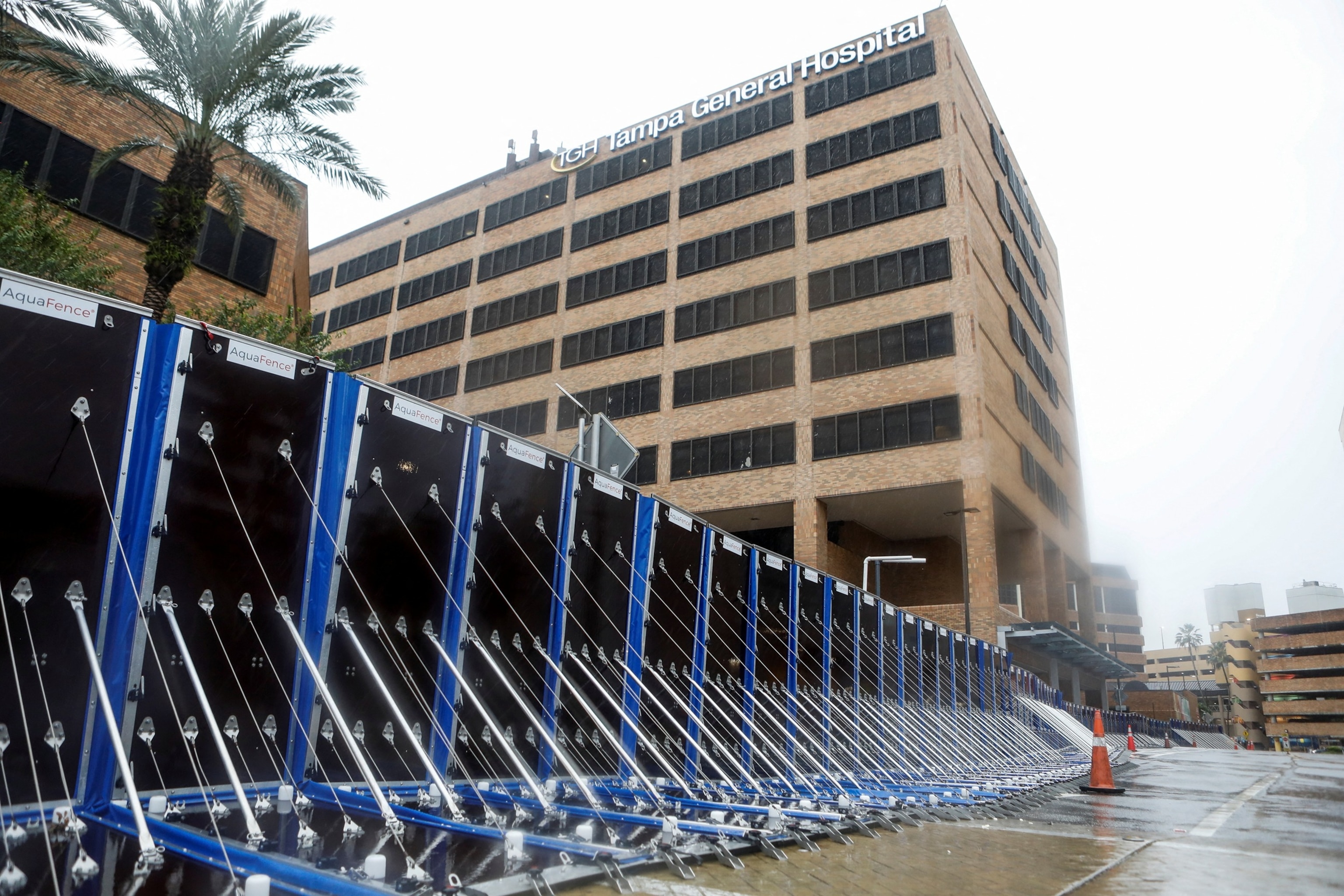
A view shows a barrier at Tampa General Hospital, as Hurricane Milton approaches landfall in Tampa, Fla., Oct. 9, 2024.
Octavio Jones/Reuters
The hospital said it has several mitigation measures in place for the storm, including its barrier, made by the company AquaFence. The fence is built to withstand storm surge up to 15 feet above sea level, the hospital said.
Peak storm surge in the Tampa Bay area topped six feet during Helene, which set a new record. The flood barrier “worked effectively to prevent the storm surge from flooding” the main campus, the hospital said in the wake of Helene.
Milton could bring a record-breaking storm surge to the Tampa Bay area. Six to nine feet of storm surge is forecast for the Tampa Bay area.
The hospital said Tuesday it had completed assembly of its flood barrier ahead of Milton “to protect vulnerable areas of the campus against storm surge and flooding.”
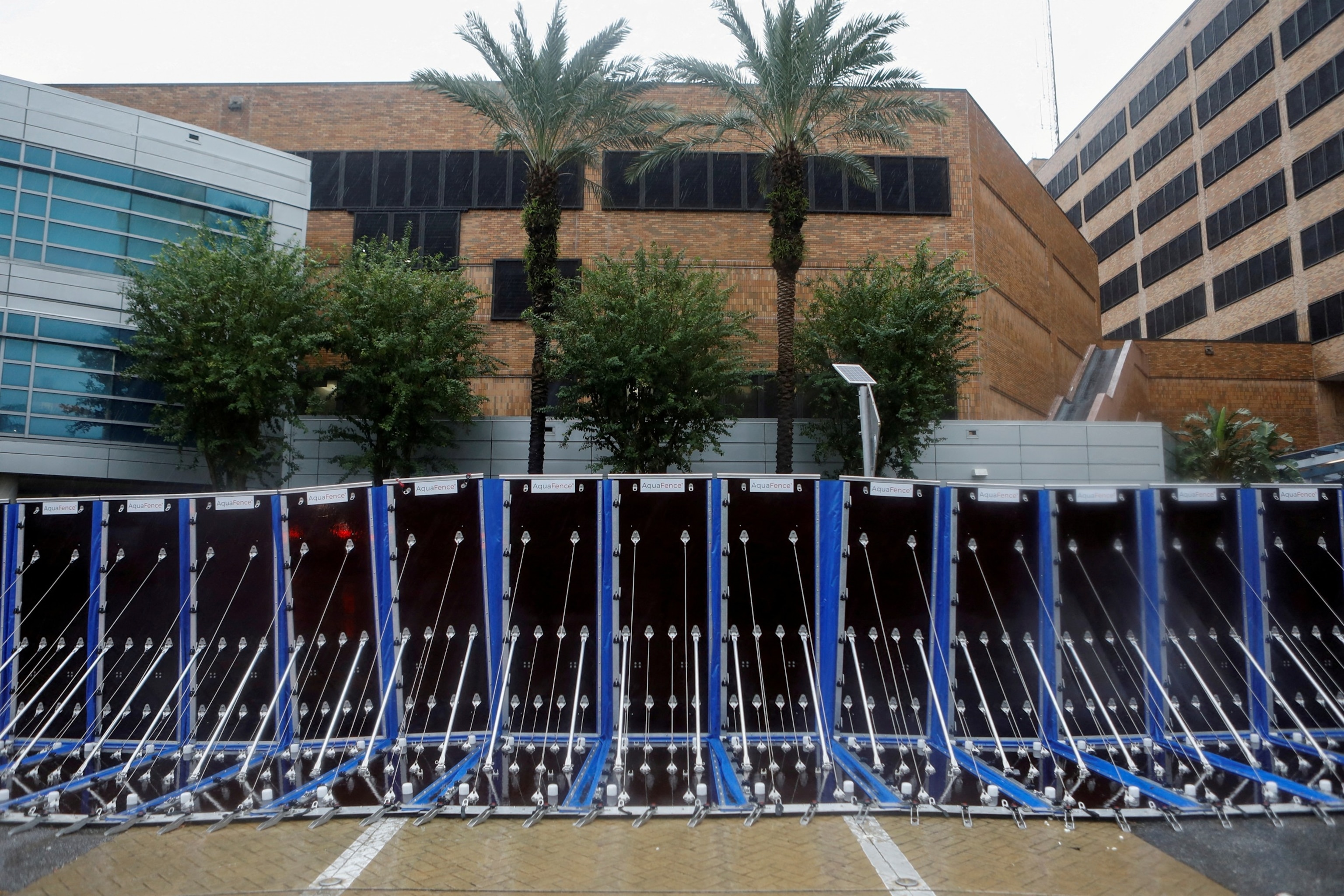
A view shows an AquaFence barrier at Tampa General Hospital, as Hurricane Milton approaches, in Tampa, Fla., Oct. 9, 2024.
Octavio Jones/Reuters
“While AquaFence has proven effective in the past, it is just the first line of defense and one of many mitigation efforts we’ve implemented this week to safely continue care for our patients,” Jennifer Crabtree, chief of staff at Tampa General, said in a statement to ABC Orlando affiliate WFTV.
The barrier is intended to protect the infrastructure of the first floor of the hospital, which does not have any clinical areas, Crabtree told NBC Orlando affiliate WESH.
It can withstand up to 130 mph winds, with an additional support strap added on one side of the fence to provide additional support in high winds, she told the station.
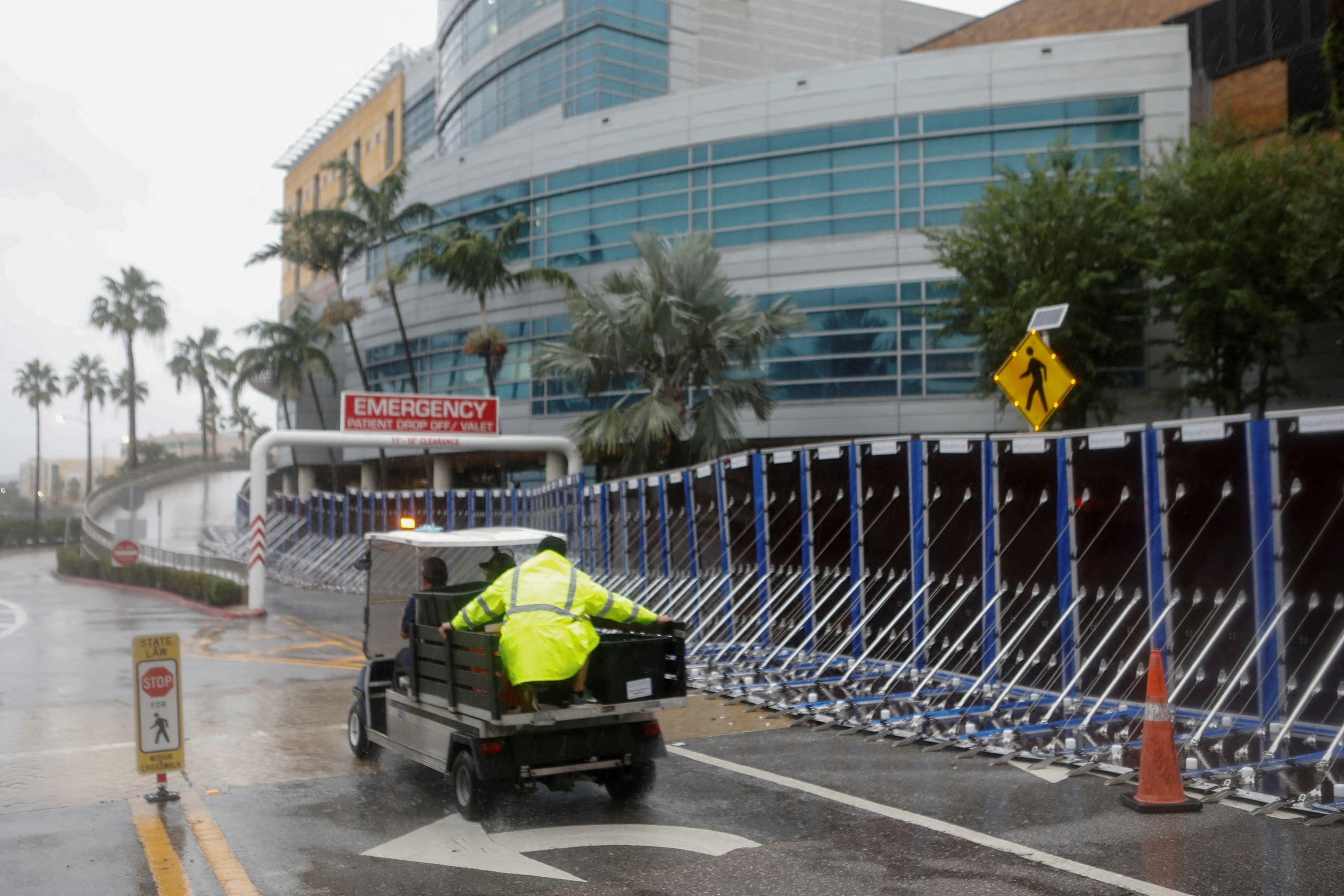
People transit in a vehicle next to an AquaFence barrier at Tampa General Hospital, as Hurricane Milton approaches, in Tampa, Fla., Oct. 9, 2024.
Octavio Jones/Reuters
Other measures to help sustain hospital operations during the storm include an on-site water source, in the event that water service is disrupted, and an on-site energy plant located 33 feet above sea level that is built to withstand the impact and flooding of a Category 5 hurricane, the hospital said. The hospital said it has also stocked up on more than five days of supplies, including food and linens, and more than 5,000 gallons of water.
Tampa Bay, and many areas across the surrounding peninsula, are particularly vulnerable to hurricanes since these regions have not been hit with a major hurricane in decades.
Hospital systems in the region have invested in flood mitigation, hardening their facilities and moving electrical equipment to levels to protect against flooding, according to Mary Mayhew, president and CEO of the Florida Hospital Association.
“Flooding is such a huge concern,” Mayhew told ABC News. “And now, on the heels of Helene, where we have debris that is, strewn up and down the Gulf Coast, drains are plugged, they’re filled with sand.”
As Hurricane Milton continues to strengthen in the Atlantic Ocean, Tampa General Hospital is bracing for the potential of a record storm surge that could have devastating impacts on the facility and its ability to care for patients. With projections showing the storm making landfall near the Tampa Bay area, hospital staff are working around the clock to prepare for the worst-case scenario.
The hospital, located on Davis Islands in Tampa, sits just a few feet above sea level, making it particularly vulnerable to storm surge. In anticipation of the approaching hurricane, the hospital has activated its emergency response plan and is taking all necessary precautions to ensure the safety of patients, staff, and visitors.
One of the biggest concerns for the hospital is the potential for flooding, which could disrupt critical infrastructure and medical equipment. To mitigate this risk, the hospital has moved essential equipment to higher ground and reinforced flood barriers around the facility. Additionally, extra supplies of food, water, and medical supplies have been stockpiled to ensure that the hospital can continue to operate in the aftermath of the storm.
In addition to physical preparations, the hospital has also mobilized additional staff to ensure that there are enough healthcare providers on hand to care for patients during and after the storm. This includes doctors, nurses, and support staff who are trained in emergency response protocols and ready to spring into action when needed.
Despite these preparations, hospital officials are urging residents in the Tampa Bay area to take all necessary precautions to protect themselves and their families from the potential impacts of Hurricane Milton. This includes following evacuation orders, securing loose objects around their homes, and stocking up on essential supplies like food, water, and medications.
As Hurricane Milton approaches, Tampa General Hospital is doing everything in its power to prepare for the potential record storm surge and ensure that it can continue to provide high-quality care to patients in the midst of a natural disaster. By taking proactive measures and working together as a community, we can weather this storm and emerge stronger on the other side.
